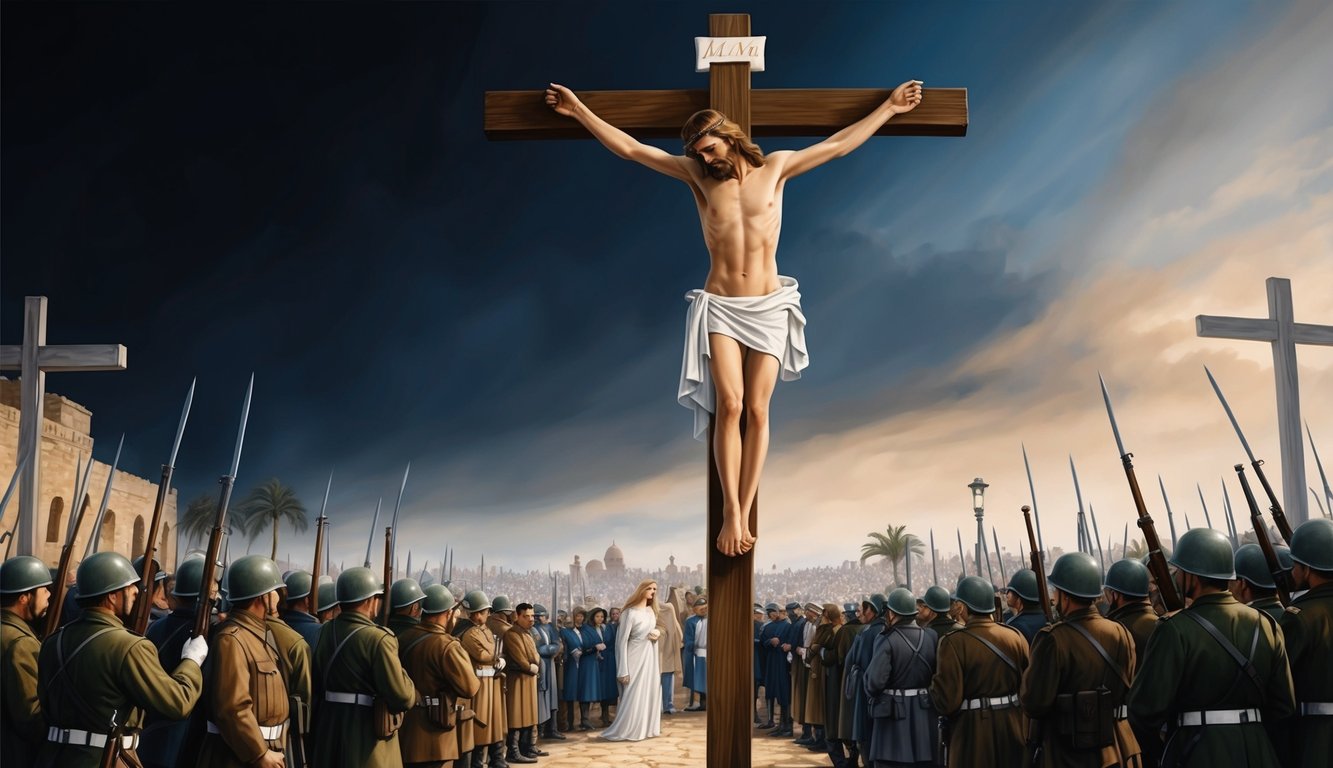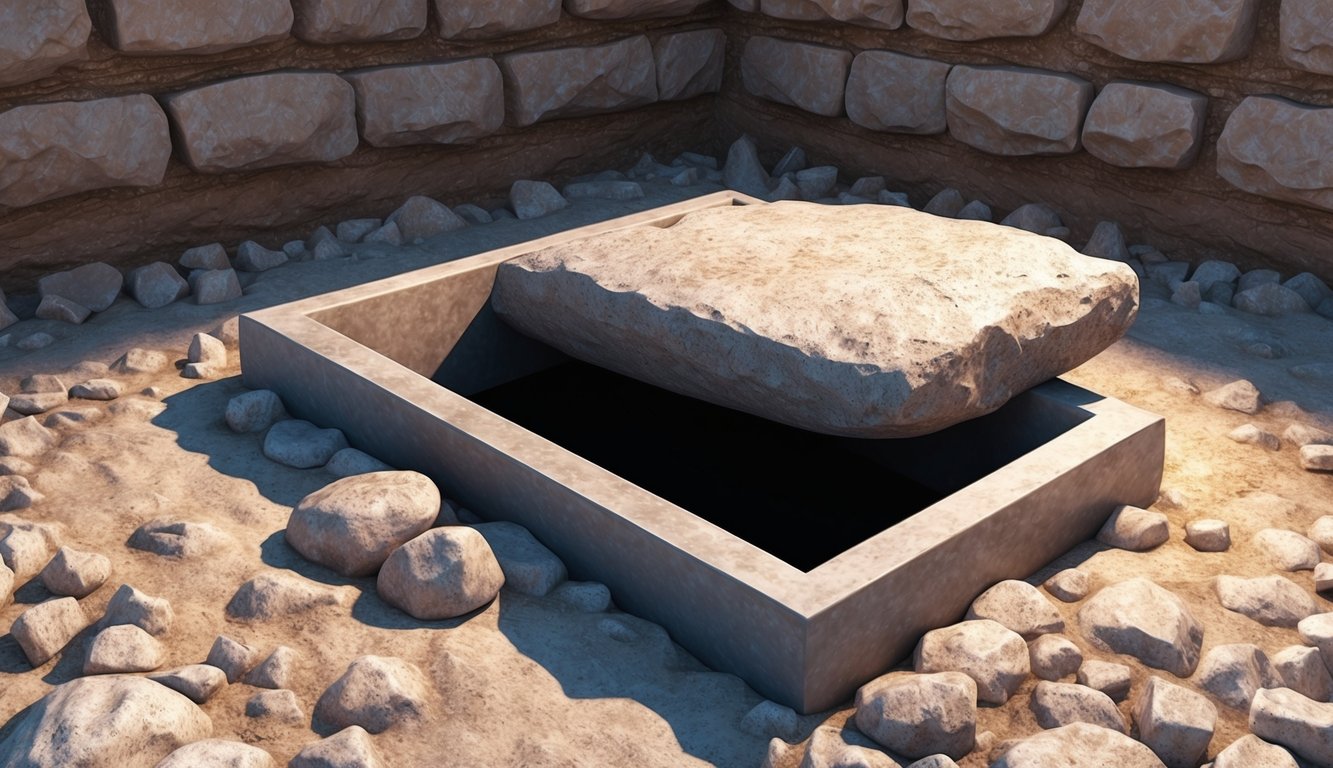Don’t Miss Out On This Unique Astrological Opportunity
Are you tired of spinning your wheels and getting nowhere? Simply put, you’re out of sync: you’re out of alignment with your astral configuration.
But: there’s a kind of map that can help you reclaim your alignment. Think of it as your own personal blueprint to success and happiness: a blueprint that will help you live your most amazing life.
Get started here.
Matthew 27 is a compelling chapter that dives deep into some of the most dramatic events in the Christian narrative. This part of the Gospel covers crucial moments such as Judas’s betrayal and the trial of Jesus before Pilate. These events not only shape the story but also challenge readers to reflect on themes of remorse, justice, and sacrifice.
You will explore how Jesus faces the crowd and the complex decisions that lead to his crucifixion.
There’s a stark contrast between the actions of Judas and Jesus, highlighting guilt and redemption.
As the story progresses, the burial of Jesus sets the stage for the proclamation of his resurrection, a pivotal moment in Christian faith.
Understanding Matthew 27 offers insights into the profound journey of Jesus and the impact of his life and death on history.
This chapter invites you to reflect on its messages and the faith it inspires across generations.
By examining the events of Jesus’ trial, crucifixion, and resurrection, we gain a deeper appreciation of his sacrifice and its significance.
Similar to how Matthew 15 explained key teachings on faith and tradition, Matthew 27 highlights the fulfillment of prophecy and the depth of divine grace.
Key Takeaways
- Judas’s betrayal and its consequences.
- The trial and crucifixion of Jesus.
- Significance of Jesus’s burial and resurrection.
The Betrayal and Remorse of Judas
Judas Iscariot played a key role in the events leading to Jesus’ crucifixion.
By making a deal with the chief priests and later feeling guilty for his actions, Judas’ story is a mixture of betrayal and regret.
Judas’ Pact with the Chief Priests
You learn that Judas agreed to betray Jesus for thirty pieces of silver.
The chief priests and elders wanted to arrest Jesus quietly without drawing public attention.
Judas saw this as an opportunity and approached them, seeking how much money he could earn for delivering Jesus.
This deal marked the beginning of the end for Jesus, as these religious leaders saw Judas’ help as perfect for their plan.
This pact illustrates not only Judas’s willingness to betray a close friend for money but also the chief priests’ determination to stop what they saw as a growing threat.
His actions are seen as being motivated by greed or even disenchantment with Jesus’ mission, although his true motives remain complex and debated.
Remorse and Tragic End of Judas
Upon realizing the gravity of his betrayal, Judas felt deep remorse.
After Jesus was condemned, Judas returned the money to the temple leaders, declaring he had sinned by betraying innocent blood.
The money was then considered tainted and unsuitable for the temple treasury.
Instead, they used it to buy a potter’s field, creating the Field of Blood.
Overcome with guilt, Judas eventually hanged himself, marking a tragic end.
His remorse underscores a deep recognition of his guilt, yet his action of taking his own life is seen as a despairing end without seeking redemption.
This highlights the power of guilt and the lack of resolution in his story.
Judas’ tragic end, as mentioned in Matthew 27 and supported by other writings, serves as a stark reminder of betrayal’s severe consequences and unending regret.
Jesus Before Pilate and the Crowds
In Matthew 27, Jesus is brought before Pilate, the Roman governor, facing accusations from religious leaders.
The crowd plays a crucial role, swayed in their demands to choose Barabbas’ release over Jesus, leading to Pilate’s symbolic act of washing his hands.
Jesus Accused and Questioned
You read that the chief priests and elders accused Jesus of claiming to be the King of the Jews.
This title was seen as a threat to Roman authority.
Pilate then confronts Jesus, questioning Him about these accusations.
Despite intense pressure, Jesus remains mostly silent during this interrogation, speaking only briefly to answer Pilate’s direct questions.
This silence stands out, as Pilate marvels at Jesus’ demeanor in the face of serious charges.
His restraint intensifies the moment, highlighting the gravity of the situation.
The accusations are serious, and Pilate is left trying to understand the truth of Jesus’ position and character.
Pilate’s Judgment and Barabbas’ Release
During the Passover festival, it is customary for the governor to release a prisoner chosen by the crowd.
The choice given to them is between Jesus and Barabbas, a notorious criminal.
Surprisingly, the Jewish crowd, persuaded by the religious leaders, asks for Barabbas to be freed.
Pilate is caught in a difficult position, as he is confronted with the crowd’s loud demands.
He questions their choice, asking what to do with Jesus, called the Messiah.
The crowd insists on crucifying Jesus, forcing Pilate to act despite his reservations.
This decision illustrates the tension Pilate faces between maintaining order and his personal belief in Jesus’ innocence.
Pilate’s Washing of Hands
To demonstrate that he is not responsible for Jesus’ fate, Pilate famously washes his hands in front of the crowd.
He declares, “I am innocent of this man’s blood.” This act symbolizes his attempt to absolve himself of guilt concerning the condemnation of Jesus.
Yet, the gesture does not change the outcome for Jesus, who is handed over to the soldiers to be crucified.
The washing of hands signifies Pilate’s conflict and his desire to distance himself from the Jewish leaders’ demands.
Meanwhile, the crowd accepts responsibility, further highlighting their role in the unfolding events.
The Crucifixion of Jesus

Matthew 27 details the events leading up to and including the crucifixion of Jesus.
You will see how Jesus was treated before his death, the specifics of the crucifixion, and the reactions of those who witnessed the event.
The Road to Golgotha
Jesus’s journey to Golgotha was marked by cruelty and mockery.
After being sentenced by Pilate, he was flogged and outfitted with a scarlet robe, a crown of thorns, and a staff in his right hand.
As the soldiers mocked him as the “King of the Jews,” they spit on him and struck him repeatedly.
On the way to Golgotha, also known as the Place of the Skull, a bystander named Simon of Cyrene was compelled to carry the cross for Jesus.
This part of his journey highlighted the intense suffering and humiliation he endured.
The Act of Crucifixion
Upon arriving at Golgotha, Jesus was nailed to the cross.
Soldiers divided his clothes by casting lots, fulfilling prophecies.
Above his head, a sign was placed reading, “This is Jesus, the King of the Jews,” as a part of the further mockery.
At one point, Jesus was offered wine vinegar to drink.
The scene was marked by mocking onlookers, who challenged him to save himself if he truly was the Son of God and King of Israel.
As darkness covered the land for three hours, Jesus cried out before giving up his spirit.
Death and Acknowledgement
Following Jesus’s death, several phenomena occurred that startled those present.
The curtain of the temple was torn in two, symbolizing the breaking of barriers between God and humanity.
An earthquake shook the ground, splitting rocks and creating widespread unease.
The centurion and soldiers watching over the crucifixion were filled with awe and fear, leading them to declare Jesus as truly the Son of God.
Joseph of Arimathea later wrapped Jesus’s body in a clean linen cloth and laid it in his tomb.
Burial and Resurrection Proclaimed

In Matthew 27, the burial and resurrection events highlight crucial moments in the Christian narrative. Joseph of Arimathea‘s actions, the Roman guard at the tomb, and the women’s encounter with the resurrected Jesus form the heart of these events.
The Burial by Joseph of Arimathea
Joseph of Arimathea, a respected member of the Jewish council, bravely approached Pilate to request Jesus’ body.
Upon receiving permission, he carefully wrapped Jesus in clean linens and placed Him in his own new tomb hewn from rock.
This act of devotion fulfilled the Jewish custom of burial and demonstrated Joseph’s reverence.
Mary Magdalene and another Mary watched the burial closely.
These women showed unwavering loyalty and were likely present to oversee and mourn.
Their actions ensured there were reliable witnesses to the burial, an important detail in the narrative that emphasizes the authenticity of the events that would follow.
The Tomb Secured by the Guard
The Pharisees and chief priests worried that Jesus’ disciples might claim He had risen from the dead.
To prevent this, they asked Pilate to secure the tomb.
Pilate agreed and provided soldiers to guard it.
The priests ensured the tomb was sealed, marking it with a Roman seal for added security.
The presence of guards highlighted the authorities’ concern about Jesus’ prophecy that he would rise after three days.
Despite these precautions, this act would further validate claims of resurrection as a miraculous event.
The guards’ role becomes pivotal when they later report what they witnessed.
Frequently Asked Questions

Matthew 27 covers key events like Jesus’ trial, crucifixion, and burial.
It holds various interpretations and significance in Christian theology and history.
What events are described in Matthew 27?
Matthew 27 details several major events, including the trial of Jesus before Pilate, the crowd choosing Barabbas, and the crucifixion.
It concludes with the burial of Jesus and the posting of guards at his tomb.
These events are central to the Christian story of redemption.
How do different Bible translations vary in their depiction of Matthew 27?
Different Bible translations sometimes offer variations in wording, which can affect the nuances of the text.
While the core message remains consistent, specific phrases or terms might be interpreted slightly differently, reflecting theological perspectives or linguistic choices.
What significance do the events of Matthew 27 hold for Christian theology?
The events in Matthew 27 are crucial for understanding themes like atonement, sacrifice, and resurrection in Christian theology.
This chapter illustrates the fulfillment of prophecies and Jesus’s role as a savior, forming a cornerstone for Christian faith regarding sin and redemption.
In Matthew 27:52, what is the interpretation of the dead rising from the graves?
In Matthew 27:52, the description of tombs opening and saints rising is interpreted in various ways.
Some see it as a historical event, while others consider it symbolic of resurrection power.
This event emphasizes the significance of Jesus’s death and its impact on life after death.
What theological insights can be gained from the crucifixion narrative in Matthew 27?
The crucifixion narrative provides insights into the suffering, love, and obedience of Jesus.
It also highlights the gravity of sin and the immense sacrifice made for humanity’s sake.
The narrative also deepens understanding of concepts like grace and mercy in a theological context.
How do scholars interpret the symbolism in the tearing of the temple veil in Matthew 27:51?
The tearing of the temple veil is often seen as a symbol of direct access to God.
It indicates the removal of barriers between God and humanity.
Scholars interpret this event as a significant shift.
It represents the end of the old covenant and the beginning of a new relationship with God through Jesus.



